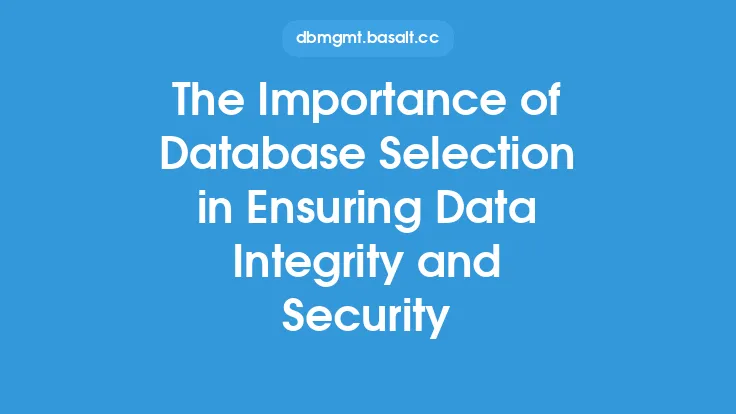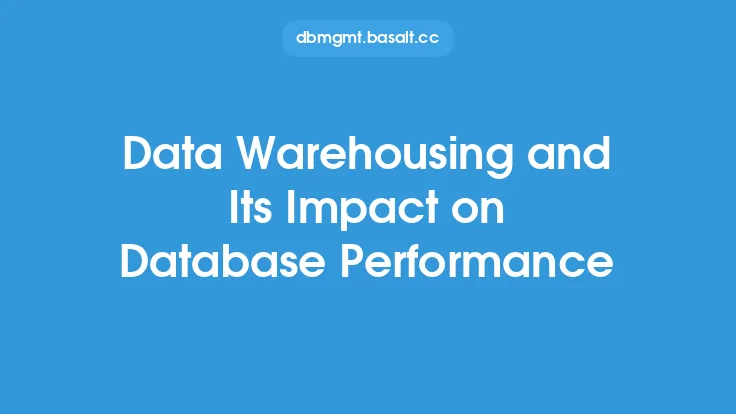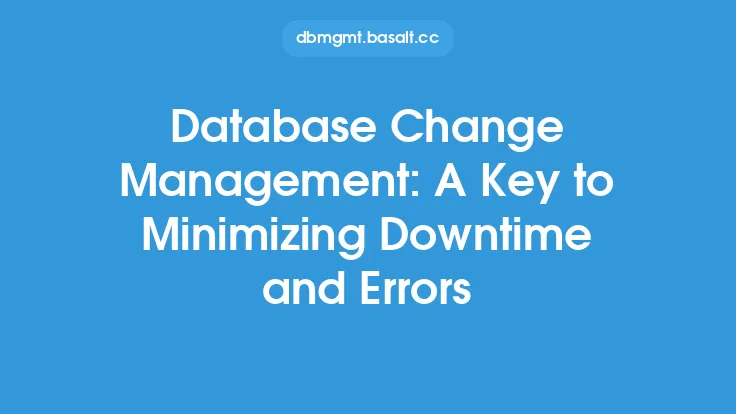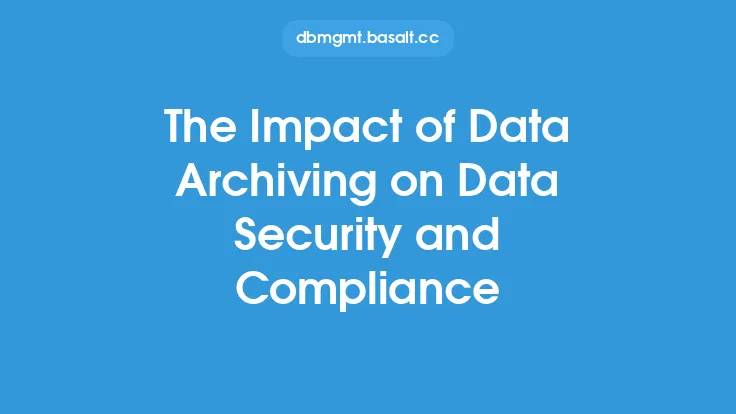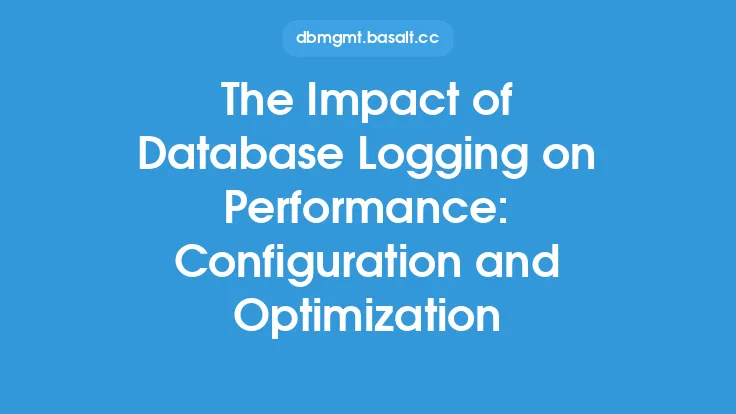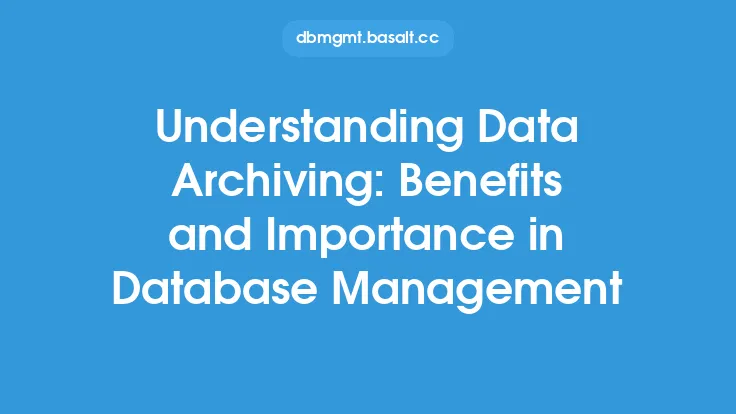Database change management is a critical process in database administration that involves planning, implementing, and monitoring changes to a database. This process is essential to ensure the security and integrity of the data stored in the database. Changes to a database can be made for various reasons, such as to fix bugs, improve performance, or add new features. However, if these changes are not properly managed, they can lead to data corruption, security breaches, or even complete data loss.
Introduction to Database Change Management
Database change management involves a series of steps that help to ensure that changes to a database are made in a controlled and predictable manner. This includes identifying the need for a change, planning the change, testing the change, and implementing the change. The goal of database change management is to minimize the risk of errors or data loss while ensuring that the database remains available and secure. This is achieved by using a combination of processes, tools, and techniques that help to track and manage changes to the database.
The Impact of Database Change Management on Data Security
Database change management has a significant impact on data security. Changes to a database can introduce new security risks, such as SQL injection vulnerabilities or unauthorized access to sensitive data. A well-planned database change management process helps to identify and mitigate these risks by ensuring that all changes are thoroughly tested and reviewed before they are implemented. This includes conducting security audits and vulnerability assessments to identify potential security risks and taking steps to address them. Additionally, database change management helps to ensure that all changes are made in accordance with established security policies and procedures, which helps to prevent unauthorized access to the database.
The Impact of Database Change Management on Data Integrity
Database change management also has a significant impact on data integrity. Changes to a database can affect the accuracy, completeness, and consistency of the data stored in the database. A well-planned database change management process helps to ensure that all changes are made in a way that preserves the integrity of the data. This includes ensuring that all changes are thoroughly tested and validated before they are implemented, and that all data is properly backed up and recovered in case of an error. Additionally, database change management helps to ensure that all changes are made in accordance with established data integrity policies and procedures, which helps to prevent data corruption or loss.
Key Components of Database Change Management
There are several key components of database change management that help to ensure the security and integrity of the data. These include:
- Change request management: This involves identifying and documenting the need for a change, and ensuring that all changes are properly authorized and approved.
- Change planning: This involves planning and designing the change, including identifying the steps needed to implement the change and the potential risks and benefits.
- Change testing: This involves testing the change to ensure that it works as expected and does not introduce any new errors or security risks.
- Change implementation: This involves implementing the change, including making any necessary updates to the database or application code.
- Change monitoring: This involves monitoring the change to ensure that it is working as expected and that there are no unexpected side effects.
Database Change Management Techniques
There are several database change management techniques that can be used to help ensure the security and integrity of the data. These include:
- Version control: This involves using a version control system to track changes to the database and application code.
- Backup and recovery: This involves regularly backing up the database and having a plan in place to recover the data in case of an error or disaster.
- Testing and validation: This involves thoroughly testing and validating all changes to ensure that they work as expected and do not introduce any new errors or security risks.
- Continuous integration and delivery: This involves using automated tools to build, test, and deploy changes to the database and application code.
- Database auditing: This involves regularly auditing the database to identify potential security risks and ensure that all changes are made in accordance with established security policies and procedures.
Database Change Management Tools
There are several database change management tools that can be used to help automate and streamline the change management process. These include:
- Database version control systems, such as Git or Subversion, which help to track changes to the database and application code.
- Change management tools, such as Redgate or Apex, which help to automate and streamline the change management process.
- Testing and validation tools, such as SQL Server Management Studio or Oracle Enterprise Manager, which help to thoroughly test and validate all changes.
- Backup and recovery tools, such as Veritas or Commvault, which help to regularly back up the database and recover the data in case of an error or disaster.
- Database auditing tools, such as SQL Server Audit or Oracle Audit Vault, which help to regularly audit the database to identify potential security risks and ensure that all changes are made in accordance with established security policies and procedures.
Best Practices for Database Change Management
There are several best practices for database change management that can help to ensure the security and integrity of the data. These include:
- Establishing a clear and well-defined change management process that includes all stakeholders.
- Ensuring that all changes are thoroughly tested and validated before they are implemented.
- Using automated tools to build, test, and deploy changes to the database and application code.
- Regularly backing up the database and having a plan in place to recover the data in case of an error or disaster.
- Regularly auditing the database to identify potential security risks and ensure that all changes are made in accordance with established security policies and procedures.
- Ensuring that all changes are made in accordance with established data integrity policies and procedures.
- Providing training and support to all stakeholders to ensure that they understand the change management process and their roles and responsibilities.
Conclusion
In conclusion, database change management is a critical process in database administration that involves planning, implementing, and monitoring changes to a database. This process is essential to ensure the security and integrity of the data stored in the database. By using a combination of processes, tools, and techniques, database administrators can help to minimize the risk of errors or data loss while ensuring that the database remains available and secure. By following best practices for database change management, organizations can help to ensure the security and integrity of their data, and minimize the risk of data breaches or other security incidents.
